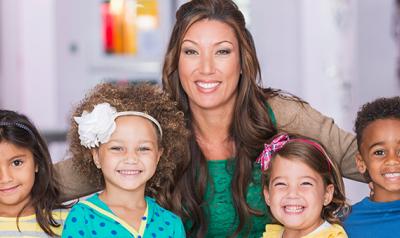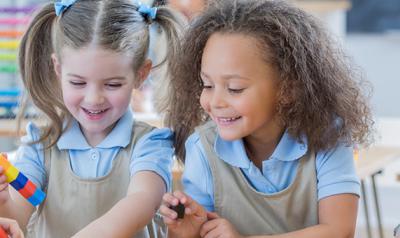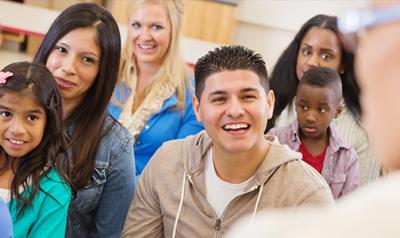A High-Quality School for Your Child in First, Second, or Third Grade

You are here
In the first, second, and third grades, your child is ready to take on a lot of challenges. She’ll learn important skills and knowledge that will be the foundation for all her later learning. Your child deserves a supportive, exciting classroom experience—a place to learn and thrive. And you’re a big part of it. In high-quality classrooms, teachers view families as partners in their children’s education. Together, you’ll help children develop the skills they need to be successful in school and life.
Some aspects of high-quality teaching are the same as when you were in school, but some may be different from your school experience. Here, you’ll find out how children learn best, how teachers support their learning, and what high-quality primary curriculum includes.
Let’s get started!
What Does “High Quality” Mean?
In addition to providing learning experiences that build on what children already know and can do, effective teachers help them stretch to learn new things. When teachers offer materials and experiences that are challenging but that children can do with a little help, they’re using developmentally appropriate practice. It’s a big part of high-quality classrooms.
Developmentally appropriate practice (DAP) means that teachers consider
- What most children this age need to learn and focus—like taking a midmorning exercise break to meet their need to be active
- What individual children need—such as working with the teacher and a few peers to solve a problem
- Ways to support each child’s family background and culture—like greeting children in their home languages
In developmentally appropriate classrooms, teachers consider
- What most children this age need to learn and focus—like taking a midmorning exercise break to meet their need to be active
- What individual children need—such as working with the teacher and a few peers to solve a problem
- Ways to support each child’s family background and culture—like greeting children in their home languages
Learning Standards
Every state has learning standards that describe what children at each grade level need to know and be able to do. Teachers in high-quality classrooms know how to balance accountability and standards (what children need to learn) with how children learn best. To design lessons and experiences, teachers look at several things: learning standards, results from assessments, discussions with you, and what they know from observing the children.


